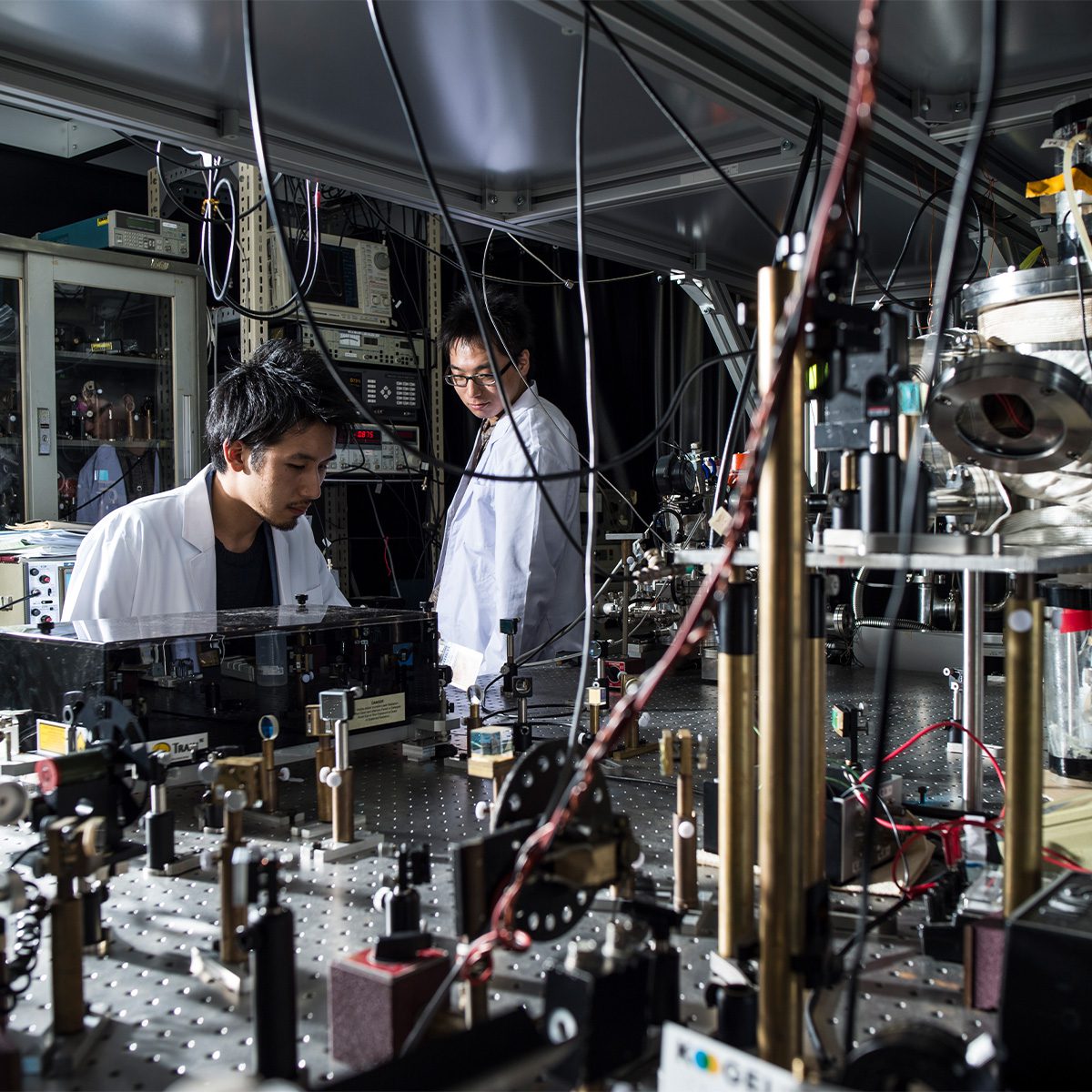Amplify Your Brand Using Nature Technology Insights
Are you ready to showcase your technology to a highly engaged audience of scientists and researchers? Join us in advancing scientific discovery by advertising in Nature Technology Features.
Enhance your brand visibility, engage with key decision-makers, and become a part of the technology that drives innovation.

Book Your Spot
- Decide which of our topics you want to advertise against — view the topics below.
- Choose whether to run display advertising and/or branded content.
- Display ads build critical awareness of your research, products, or events.
- Branded content uses compelling storytelling to engage Nature audiences with your message. Your article can be written by our award-winning custom media team or supplied by your organization.
- Book with us before the booking deadlines detailed in the calendar below.

What Are Nature Technology Features?
Nature Technology Features are editorially independent sections, spotlighting scientists and the technologies they choose. Each feature provides essential insights that can be readily implemented in laboratories around the world, making it the perfect platform for your brand to shine.
Why Advertise with Us?
- Targeted Reach: Access a global community of scientists who are eager to discover the latest technology and methods in their field.
- Prestigious Platform: Your brand will be featured alongside Nature’s influential content, enhancing your credibility and visibility in the industry.
- Expertly Crafted Content: Our award-winning custom media team will create compelling branded content that highlights the benefits and applications of your technology and products

2025 Nature Technology features calendar:
View the topics in more detail.
| Publication date in 2025 | Nature Technology topic | Booking deadline for branded content (Print and Online) | Booking deadline for branded content (online only) | Booking deadline for advertiser-supplied branded content | Booking deadline for display ad (submission of PDF) |
|---|---|---|---|---|---|
| 16 January | Expansion microscopy | N/A | |||
| 23 January | Technologies to Watch 2025 | N/A | |||
| 6 February | Microbes in Space | N/A | |||
| 20 February | Why is it so hard to rewrite a genome? | 15 December 2024 | 15 December 2024 | N/A | |
| 10 April | Spatial proteomics [ONLINE ONLY] | ONLINE ONLY | 2 February | 11 February | N/A |
| 15 May | Organoids | 19 February | 6 March | 18 March | N/A |
| 29 May | AI and Digital Pathology [ONLINE ONLY] | ONLINE ONLY | 20 March | 1 April | N/A |
| 19 June | Cryo-EM [ONLINE ONLY] | ONLINE ONLY | 9 April | 22 April | N/A |
| 3 July | 25 years of the UCSC Genome Browser [ONLINE ONLY] | ONLINE ONLY | 23 April | 6 May | N/A |
| 21 August | Gene Regulatory Networks [ONLINE ONLY] | N/A | |||
| 11 September | Working with Biobanks [ONLINE ONLY] | N/A | |||
| 25 September | Cell Recording Technologies [ONLINE ONLY] | N/A | |||
| 13 November | Neuroscience [ONLINE ONLY] | ONLINE ONLY | 4 September | 16 September | N/A |
-
Technologies to Watch in 2025 (23 January)
Our annual roundup of exciting new technologies for 2025. This is scheduled to run 23 Jan 2025.
-
Microbes! In! Space! (6 February)
A microbiology-focused story looking at the potential for biotechnology in space, the challenges of doing these things in low-gravity, low-water environments, and how to protect other planetary bodies from terrestrial microbes.
-
Why is it so hard to rewrite a genome? (20 February)
Researchers have long worked to rewrite genomes for both engineering and basic research applications. But every time they try they discover that there are hidden mysteries in the genome – eg, cryptic promoters and transcripts they didn’t know were there. This feature will focus on why this work is so difficult, inspired by a recent paper that found that a number of bacterial genomic regions that are hard to rewrite contain cryptic transcripts and/or regulatory elements.
-
Spatial proteomics (10 April)
Specific topic to be discussed, but this will look at advances in spatial proteomics – that is, methods to take chemical snapshots of tissues and cells while retaining spatial information about where the materials come from. Most proteomics methods work by isolating tissues or cells, grinding them up, fractionating them, and then passing them through a mass spectrometer (or other detection approach). Spatial proteomics methods lack the resolution and sensitivity of these ‘bulk’ methods, but they balance that by being able to report specifically where in the tissue a given molecular profile is present. This is basically the protein equivalent of spatial transcriptomics.
-
Organoids (15 May)
Whether by linking brain regions like LEGO bricks, integrating parts through microchannels, layering structures, or employing other bioengineering strategies, researchers are working to better replicate the brain’s intricate architecture, using cell-culture models called organoids. In doing so, they are creating more faithful models with which to dissect neuropsychiatric disorders, evaluate potential treatments and deepen our understanding of human brain function.
-
AI & digital pathology (29 May)
AI-enabled histology/pathology (‘digital pathology’), refers to the idea of using AI to either ‘read’ a slide or predict a staining pattern based on other stains that have been done. The technology is useful because there aren’t enough pathologists, and reading and interpreting slides takes time — and skill. Humans make mistakes, but so do AIs, so the challenge is to make tools that work but that don’t lead to false positives or negatives.
-
Cryo-EM (12 June)
Cryo-electron microscopy is a structural biology method used to determine the 3D conformation of proteins; it is an alternative to older techniques such as x-ray crystallography and nuclear magnetic resonance. The technique uses images of vast numbers of frozen protein particles, plus sophisticated algorithms to determine the particle’s form. But proteins are dynamic molecules, and most cryo-EM can capture only a single protein state. This feature will focus on ‘time-resolved cryo-EM’ — a form of the cryo-EM that uses images captured over time to study molecular motion.
-
25 years of the UCSC Genome Browser (3 July)
The classic UCSC Genome Browser (https://genome.ucsc.edu/), which allows researchers to visualize genomic features as on a map, turns 25 next year (as does the first Human Genome). This feature will look back at the venerable tool to see what’s given it such longevity, how it’s changed, and what’s next. This would run in July 2025 or so.
-
Gene regulatory networks (21 August)
Genome-wide association studies have identified countless genetic variants that are associated with development and disease. But most do not overlap with gene sequences — they fall in noncoding sequences. Increasingly, researchers are using computational tools — mostly deep learning and AI — to first predict where key regulatory signals lie in the genome and then predict what happens when those sequences are altered. Such tools can also be used to identify key players in developmental pathways — that is, gene-regulatory networks, and design new regulatory elements to, say, control expression in specific cell types. A follow-up to a 2022 tech feature (https://www.nature.com/articles/d41586-022-02826-1)
-
Working with biobanks (11 September)
Biobanks are repositories of biological samples and associated data, plus tools to work with that and enrich that data. But how does one get access to and work with biobank data? This feature will look into the different biobanks around the world, the services they offer, and what can be done with their resources.
-
Cell recording technologies (25 September)
Cell-recording technologies are techs that use genetic tricks to alter the cellular genome in response to external signals or conditions, like a ticker-tape recording device. Researchers use these to monitor, over time, how cellular environments change — for instance, the sequence of signals they see. This feature will look at what these techs are, how they work, and what researchers are doing with them.
-
Neuroscience (13 November)
Topic to be discussed, but it’s a fair bet that we’ll have a neuroscience-focused feature in late 2025. Possible topics include in vivo microscopy (that is, imaging in live animals) and neuroimaging. Or perhaps big neuroscience data.
Get Started Today!
Contact us now to learn more about advertising opportunities and how you can make a lasting impact in the scientific community. Your journey to reach the right audience starts here!
Advertise in Nature Technology features in 2025
"*" indicates required fields
